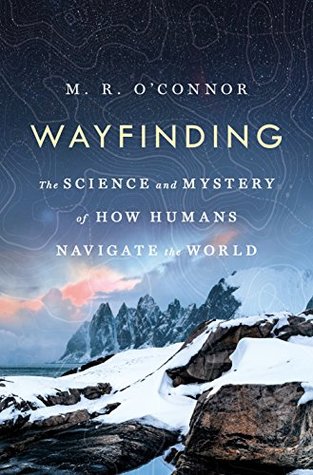More on this book
Kindle Notes & Highlights
Though our predicament made me laugh, I started to wonder: what mathematical calculation based on an unknown, perhaps out-of-date map had come up with this murderous route? And why, I thought, had we naively trusted a disembodied algorithm and its satellite-radiated directions as it directed us toward a steep gorge? I had forgotten that my phone knew nothing of whether humans can fly, or the seasonal flow of the Rio Grande, that it had no actual experience because it had never been born, only programmed by someone who might never have set foot in New Mexico.
What happens when we outsource navigation to a gadget? Even the previous generation of navigation tools—the compass, chronometer, sextant, radio, radar—required us to give attention to our surroundings.
For us, navigation is not pure intuition, but process.
At the heart of successful human navigation is a capacity to record the past, attend to the present, and imagine the future—a goal or place that we would like to reach. In this way, navigation involves not only literal travel through space but also mental travel through time, what some call autonoetic consciousness.
What is for sure is that some fifty thousand years ago we fanned out from Africa. By twenty thousand years ago, our species had spread to Asia and Europe. By twelve thousand years ago, we had colonized the globe.
For the majority of our species’ existence, we traversed the earth using the landscape itself as a guide. And we seemed to have moved a lot.
Our rapid migration, Matthews and Butler hypothesize, selected for individuals who were less vulnerable to novel stressors and whose risk-taking capacity pushed them to explore.
What if even the experience of being lost is culturally contingent?
Navigation devices make vast reserves of distributed knowledge available to us in an instant. But, crucially, they never require us to possess information in our own memory in the way that successful navigators have been required to do till now.
In the simplest terms, wayfinding is the use and organization of sensory information from the environment to guide us.
Or maybe wayfinding is an activity that confronts us with the marvelous fact of being in the world, requiring us to look up and take notice, to cognitively and emotionally interact with our surroundings whether we are in the wilderness or a city, even calling us to renew our species’ love affair with freedom, exploration, and place.
What Aporta found is that certain routes for traveling across the land become favored over generations, and knowledge of these unmarked trails is passed down from person to person, family to family, community to community, not in the form of maps but as oral descriptions that are memorized.
Spatial orientation researchers generally break human navigation strategies into two sorts. The first is route knowledge, an ability to construct a sequence of points, landmarks, and perspectives that make up a path from one place to another.
The second strategy is called survey knowledge: the traveler organizes space into a stable, maplike framework, in which every point or landmark has a two-dimensional relationship to every other point. While route knowledge is the verbal description you might give when telling a friend how to get to the post office, survey knowledge is the “bird’s-eye” map of the walk you might draw for that friend on a piece of paper.
You have invented an elixir not of memory but of reminding;
“There are only four or five of them, and their brain damage varies. But they are pretty normal: they go to school, they talk, they know facts, but they really don’t remember their lives—they don’t have autobiographical memory. And they can’t find their way to a school that they have attended for years and that’s two blocks away.”
The younger the age, the more quickly and easily they seemed able to encode spatial cells and learn.


